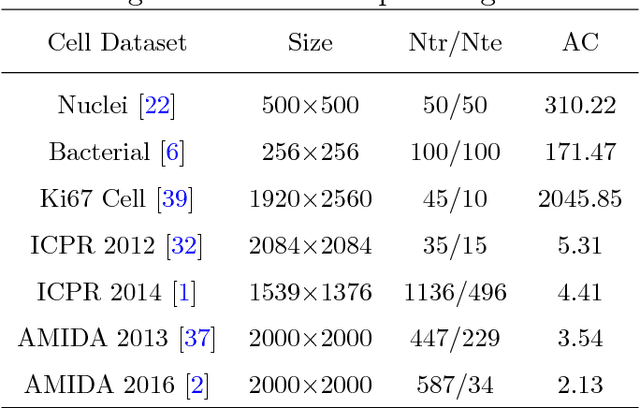Cell Detection in Microscopy Images with Deep Convolutional Neural Network and Compressed Sensing
Paper and Code
Feb 21, 2018



The ability to automatically detect certain types of cells or cellular subunits in microscopy images is of significant interest to a wide range of biomedical research and clinical practices. Cell detection methods have evolved from employing hand-crafted features to deep learning-based techniques. The essential idea of these methods is that their cell classifiers or detectors are trained in the pixel space, where the locations of target cells are labeled. In this paper, we seek a different route and propose a convolutional neural network (CNN)-based cell detection method that uses encoding of the output pixel space. For the cell detection problem, the output space is the sparsely labeled pixel locations indicating cell centers. We employ random projections to encode the output space to a compressed vector of fixed dimension. Then, CNN regresses this compressed vector from the input pixels. Furthermore, it is possible to stably recover sparse cell locations on the output pixel space from the predicted compressed vector using $L_1$-norm optimization. In the past, output space encoding using compressed sensing (CS) has been used in conjunction with linear and non-linear predictors. To the best of our knowledge, this is the first successful use of CNN with CS-based output space encoding. We made substantial experiments on several benchmark datasets, where the proposed CNN + CS framework (referred to as CNNCS) achieved the highest or at least top-3 performance in terms of F1-score, compared with other state-of-the-art methods.
 Add to Chrome
Add to Chrome Add to Firefox
Add to Firefox Add to Edge
Add to Edge